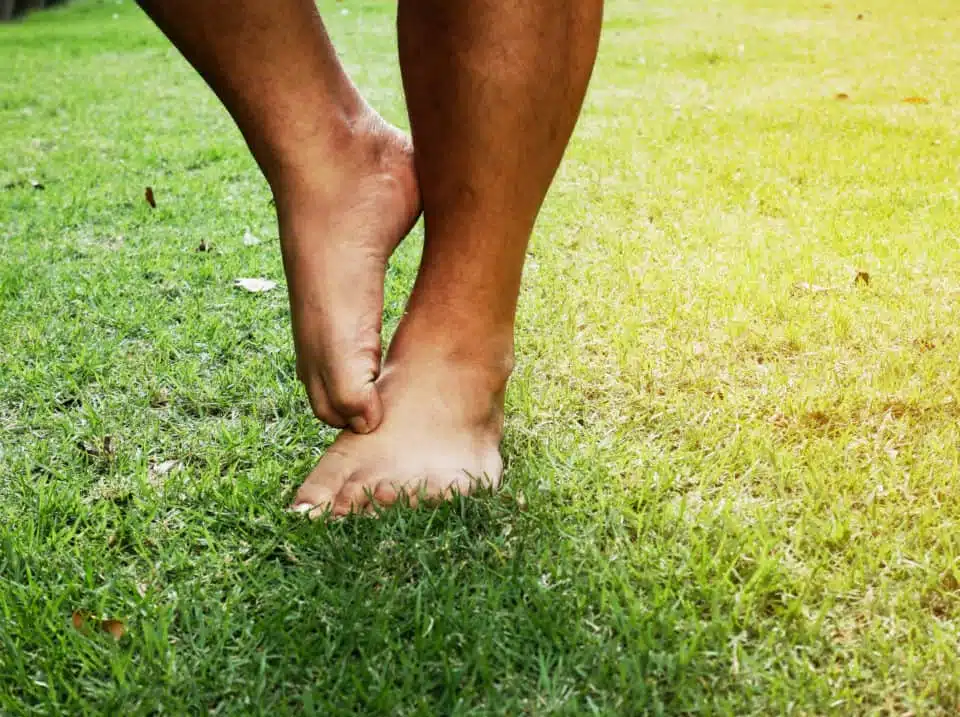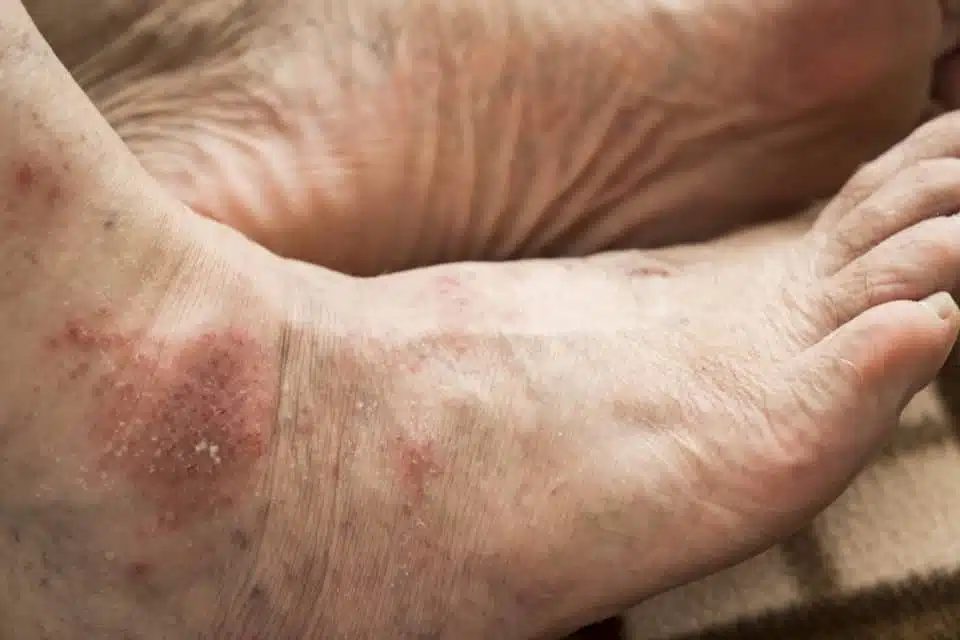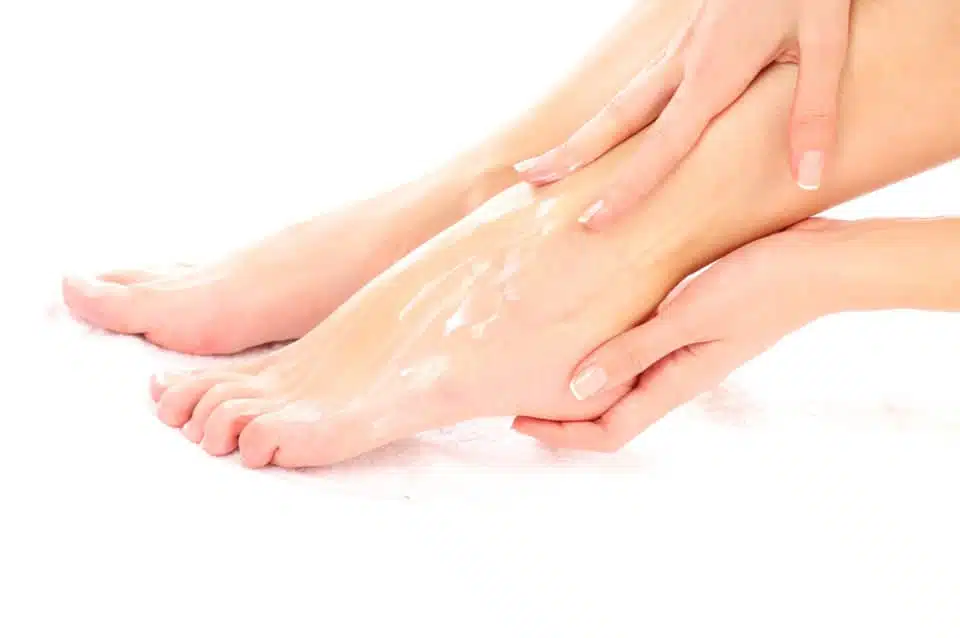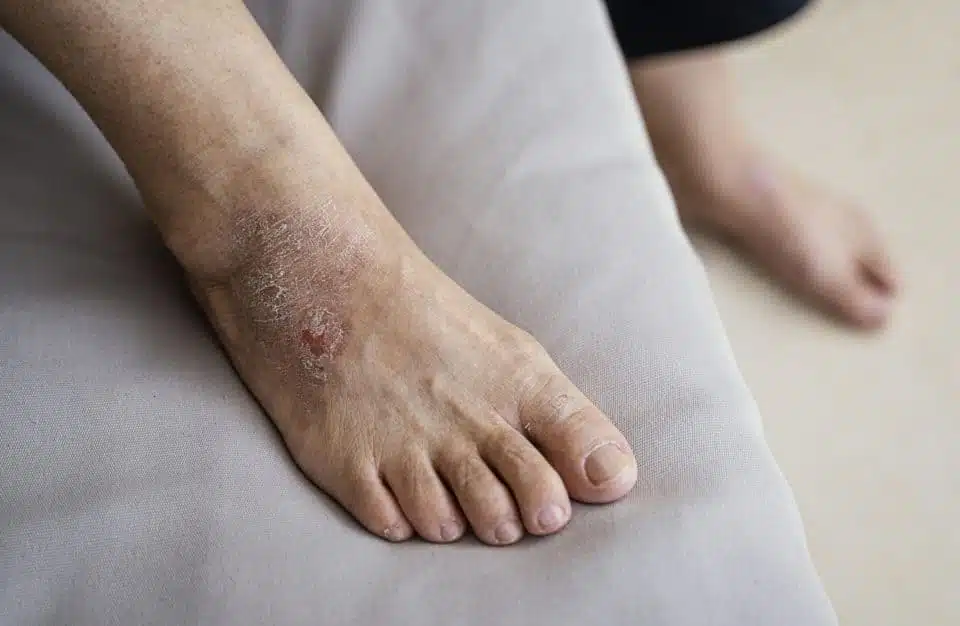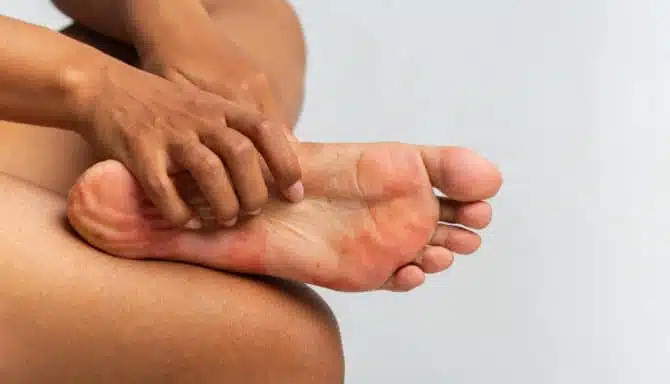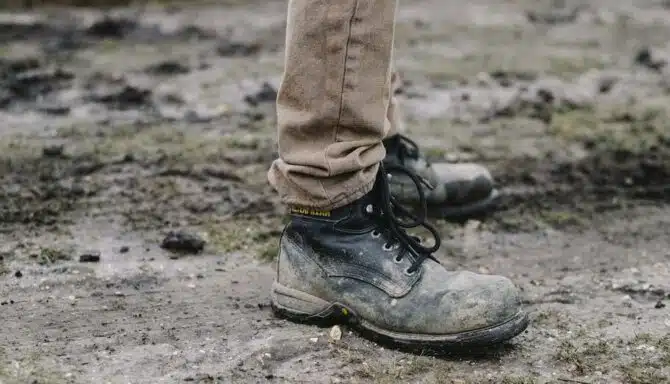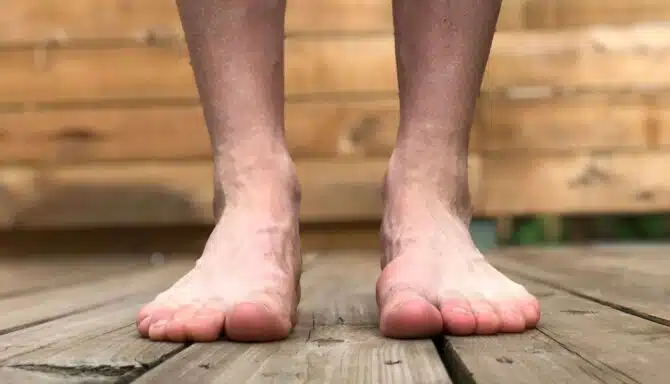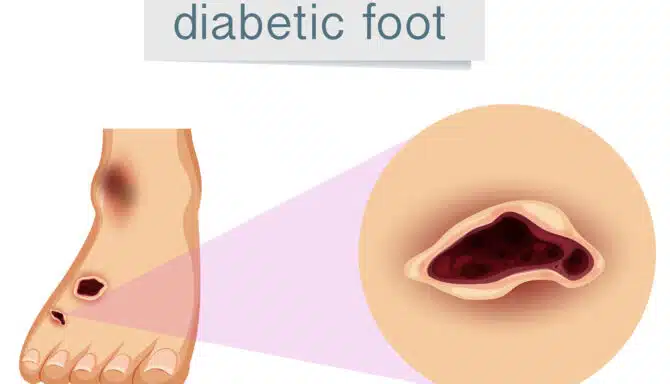With spring and summer comes the outdoor season. And allergy season.
When you think of seasonal allergies, the first thing to come to mind is pollen. In the spring and summer months, tree, grass, and weed growth increase the pollen particles in the air. Humans may react to these pollens by developing an itchy nose/throat, nasal congestion, runny nose, or postnasal drip. But did you know there’s another type of allergy that may plague you in the summer? Yes – foot allergies.
In this article, we explore the concept of foot allergies, how they affect your feet, and how you can avoid skin reactions.
What are foot allergies, you may ask?
Foot allergies are your body’s reactions — hypersensitive reactions in fact — to an external factor or substance in the environment. Allergies can affect any part of your body, and your feet and legs are no different. Certain foods, insect bites, plants and pollens can trigger an allergic reaction.
Contact dermatitis
Contact dermatitis is a red, itchy rash caused by a substance coming in contact with your skin. Common substances include plants, soaps (like laundry detergent), cosmetics, fragrances, chlorine (like in pools or hot tubs), and jewelry. Contact dermatitis can also cause blisters, even bubbling of the skin. Although reactions are not contagious nor serious, they can be quite uncomfortable. The affected area is typically the part of your skin that comes in direct contact with the offending substance. Our feet and lower legs are particularly prone to contact dermatitis because of their proximity to the ground.
Plants that can cause contact dermatitis
When outdoors, you should be particularly cautious and aware of certain plants as their chemicals are a particularly common cause of contact dermatitis. In Ontario, there are a number of weeds and plants that are harmful and can cause severe skin reactions. Although we may all know about poison ivy, there are many other plants that can cause contact dermatitis. A few examples include:
- Wild parsnip
- Stinging nettle
- Poison ivy
- Pokeweed
- Poison hemlock
- Giant hogweed
- Dog-strangling vine
You should be particularly cautious when in cottage country, in forests, in areas of long grass and brush, or when going off-trail when running or even walking your dog. In fact, you can even get contact dermatitis from your pet — your pet can too actually, although the reaction is generally less severe — without ever actually coming in contact with the offending substance. Your pet may be the carrier and can bring the sap into your home.
Foot allergy prevention and treatment
The best form of prevention for contact dermatitis is to recognize and learn about the irritants that affect your skin in particular. An allergist (doctor specializing in allergies) can do this for you as part of a complete medical examination. However, there is a number of other precautions you can take to help prevent and treat contact dermatitis:
- Wash your skin: Even if you haven’t come in direct contact with an irritant, wash your skin if you think you may have been exposed.
- Know your environment: If you’re out on a walk or in the backcountry, wear long socks and never go barefoot. Additionally, wash apparel afterward to remove the irritants from your clothes, and wash your pet if you think they’ve come in contact with a harmful substance (both for their sake and for yours).
- Use moisturizer: Keeping your skin moisturized keeps its outermost layer healthy.
- Steroid creams or ointments and oral medication: Your doctor may prescribe certain medications depending on the severity of the contact dermatitis.
Insect bites
Spring and summer are primetime for bugs and insects, especially in more rural areas. Humans can have minor to serious reactions to insect bites with the most common symptoms being redness and itchiness. Some bites, like that of a mosquito, are likely to be less painful and severe than that of a wasp. Insects inject certain chemicals when they bite, which causes your skin’s reaction. The following insects can cause a reaction when they bite:
- Ticks
- Fleas
- Bees
- Wasps
- Mosquitoes
- Flies (black flies, horse flies, deer flies)
All of these insects may target your feet, especially ground insects like ticks and fleas. Additionally, insects can carry diseases such as Lyme disease in ticks. The best form of defense against insect bites is to wear lightly-coloured clothing and reduce exposed skin.
How to treat an insect bite
Most insect bites can be treated at home unless one has a severe reaction (anaphylaxis) to bites. In terms of stingers, insects like hornets, wasps, and yellow jackets do not leave a stinger, so no immediate action is required. There is one exception: According to the Allergy Asthma & Immunology Society of Ontario, a honeybee leaves its stinger in the skin, and it is necessary to remove this immediately. This is because the stinger and sac slowly seep out venom, and you want to stop this as soon as you can. Other insects like hornets, wasps, and yellow jackets do not leave a stinger, so no immediate action is required.
After stingers have been accounted for, you can gently wash the area with soap. If needed, use a topical anesthetic, such as Polysporin, or calamine lotion if itching and redness persist.
Hives and angioedema
Hives and angioedema are a condition where your skin forms large and small red blotches. This skin reaction is quite itchy. Certain foods and medication are often the culprit for this type of foot allergy. The difference between the two is that hives are a surface skin reaction that goes away quite quickly (often in less than 24 hours), while angioedema is a reaction of the skin below the outer layer.
Foods that can cause hives and angioedema
- Shellfish
- Fish
- Peanuts
- Soy
- Eggs
- Milk
Medications that can cause hives and angioedema
- Penicillin
- Aspirin
- Ibuprofen
- Naproxen sodium
- Blood pressure medication
The most common treatment for hives and angioedema is antihistamine medication.
Dyshidrotic eczema
Dyshidrotic eczema is a foot condition that causes small itchy blisters on the soles of the feet. Eventually, these blisters can dry and crack causing pain. According to the National Eczema Association, the actual cause of dyshidrotic eczema isn’t known. But it’s believed to be related to genetics as this condition tends to run in families from generation to generation. Further, those who suffer from other forms of eczema are more prone to dyshidrotic eczema.
This skin condition is often found in adults between the ages of 20 and 40. Certain triggers include elevated stress, contact with metals like nickel, and seasonal allergies.
